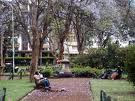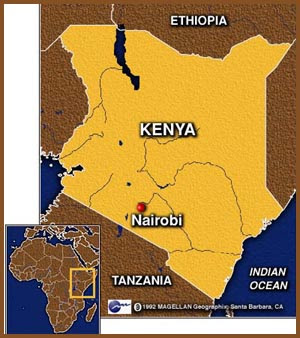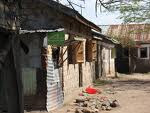:::::::::::::::::::::::::::::::::::::::::::::::::::::::::::::::::::::::::::::::::::::::::::::::::::::
Marabou storks
***** Location: Kenya
***** Season: Topic
***** Category: Animal
*****************************
Explanation
The Marabou Stork, Leptoptilos crumeniferus,
is a large wading bird in the stork family Ciconiidae. It breeds in Africa south of the Sahara, occurring in both wet and arid habitats, often near human habitation, especially waste tips. It is sometimes called the "undertaker bird," due to its shape from behind: cloak-like wings and back, skinny white legs, and sometimes, a large white mass of "hair."
Like most storks, the Marabou is gregarious and a colonial breeder. In the African dry season (when food is more readily available as the pools shrink) it builds a tree nest in which two or three eggs are laid.
The Marabou Stork is a frequent scavenger, and the naked head and neck are adaptations to this, as it is with the vultures with which the stork often feeds. In both cases, a feathered head would become rapidly clotted with blood and other substances when the bird's head was inside a large corpse, and the bare head is easier to keep clean.
© More in the WIKIPEDIA !
*****************************
Worldwide use
*****************************
Things found on the way
*****************************
HAIKU
Dandora garbage-
Marabou storks scavange
for food
Andrew Otinga
. Photo by Isabelle Sensei
Dandora Garbage Dumps
Dandora Municipal Garbage site
. . . CLICK here for Photos !
:::::::::::::::::::::::::::::::::::::::::::::::::::::::::::::::::::::::::::::::::::::::::::::::::::::
on a thorn tree
one marabou stork...
gazing
Isabelle Prondzynski
:::::::::::::::::::::::::::::::::::::::::::::::::::::::::::::::::::::::::::::::::::::::::::::::::::::
a marabou stork
prepares to fly-
footsteps
Andrew Otinga
:::::::::::::::::::::::::::::::::::::::::::::::::::::::::::::::::::::::::::::::::::::::::::::::::::::
The Coming of Marabou Storks
About 300m from Bahati School compound, a dump site was recently established. This dumpsite has turned out to be a habitat for a certain species of birds which only used to be found around Nyayo Stadium. They are called Marabou Stocks. These birds are helpful and destructive at the same time. For one, they engulf bones like nothing, thus getting rid of the bones along with other organic wastes from the environment. However, after engulfing the bones, they retreat to their newly found domicile, which is, unfortunately, the famous acacia tree outside Bahati School.
And my goodness, if you happen to look at their droppings, you will marvel at how many undiscovered wonders of nature there still are. These birds produce pure white chalk. The acacia tree and its entire cool base where we used to rest, is nowadays hardly recognizable. It is smeared in pure white chalk. Other vegetation around the acacia too, has not been spared. Even the morning glory and other creeping plants under and around the acacia are smeared white. If you happen to be new and mistakenly go to rest on the wooden benches under the acacia, be ready to go take a fresh bath.
stinky dumpsite —
Marabou Storks stooping
all day long
Patrick Wafula
February 2013
:::::::::::::::::::::::::::::::::::::::::::::::::::::::::::::::::::::::::::::::::::::::::::::::::::::
MORE
. haiku with maribou from Kenya .
*****************************
Related words
***** Thorn tree, Naivasha Thorn, Fever Tree
***** . Migrating Birds (wataridori) and stork .
[ . BACK to WORLDKIGO . TOP . ]
:::::::::::::::::::::::::::::::::::::::::::::::::::::::::::::::::::::::::::::::::::::::::::::::::::::















